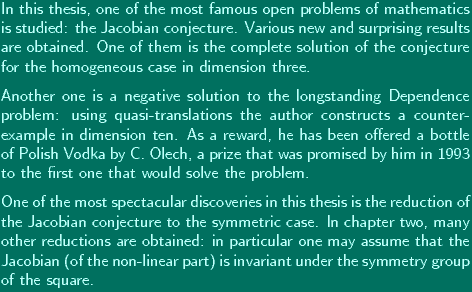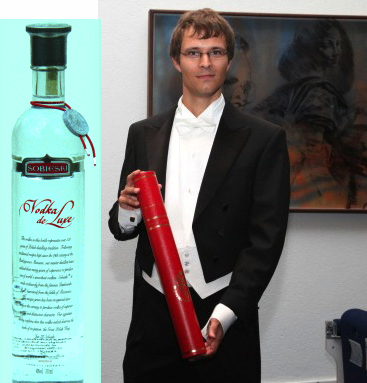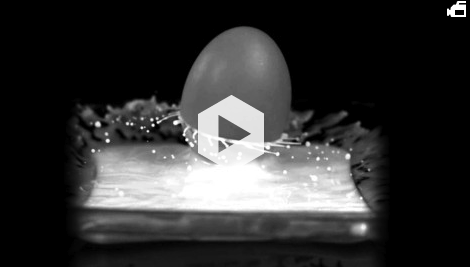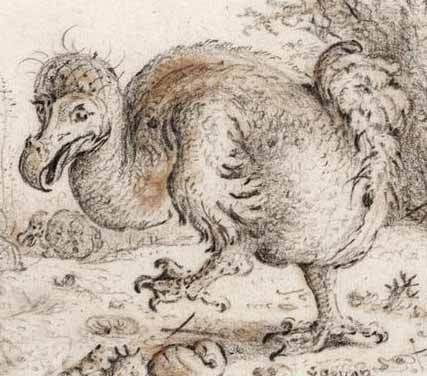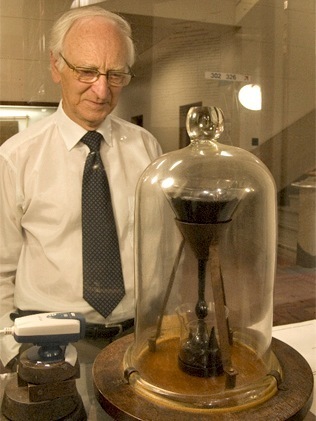Marc Abrahams's Blog, page 574
May 12, 2012
“Why Do I Like People Like Me?”
Today’s Somewhat Intriguing Study Title of the Day is:
“Why Do I Like People Like Me?“, Manuel Bagues and María José Pérez Villadóniga, Universidad Carlos III Working Paper #2008/06, Revised and resubmitted to Journal of Economic Theory, October 2010.
Co-author Bagues is also co-author of “Politicians’ Luck of the Draw: Evidence from the Spanish Christmas Lottery,” which we mentioned here a while back.

May 11, 2012
The games and vodka of Michiel de Bondt
Scientists, most of them, do find enjoyments, even in the most serious moments. Witness evidence in the case of Michiel de Bondt, pictured here on the 7th of July 2009. Dr. de Bondt describes the occasion:
On the 7th of July 2009, I, Michiel de Bondt, promoted to Ph.D. in mathematics.
Thesis (electronic, without cover)
The front cover of the thesis [the topic of which is "Homogeneous Keller Maps"] contains the bottle and the back cover follows below:
Dr. de Bondt is famed for, among other things, writing the following two papers:
“The computational complexity of Minesweeper,” Michiel de Bondt, arXiv:1204.4659, 2012.
“Solving Mahjong Solitaire boards with peeking,” Michiel de Bondt, arXiv:1203.6559, 2012.

Vi Hart’s visit to Möbius world
Vi Hart tells, in this video, about a visit to a Möbius world:
Interest in things Möbius runs in the Hart family. Vi Hart’s father, George Hart, invented the Möbius bagel.

The “Cracking the Egg Sprinkler Mystery” video
Flora Lichtman’s video shows how two scientists connected eggs and milk to produce a pump. The video uses other, better ways to describe the situation. Click on the image, and be whisked to the Science Friday web site, to see the video:
Some background info, from Science Friday:
When engineer Tadd Truscott was in grad school, one of his classmates at MIT suggested they spin an egg in a puddle of milk and film it with a high-speed camera. What they saw was a tiny sprinkler system: the milk rose up the sides of the spinning egg, shooting off at the egg’s equator. This became a household science experiment for Truscott and his kids, until one day he realized he didn’t know why the milk rises up the egg. Armed with a PhD in hydrodynamics, Truscott, now at Brigham Young University, and colleagues including mechanical engineering student Ken Langley, set out to crack the case.

May 10, 2012
A few gigatons short of a blockbuster (part I)
 Bruce Willis heroically managed to save the world in the film 1998 Armageddon. He was able to deflect a huge Earth-bound asteroid with the expedient use of a well placed thermonuclear explosion. But some have questioned whether Willis’s feat would actually have been possible – without breaking the laws of physics . . .
Bruce Willis heroically managed to save the world in the film 1998 Armageddon. He was able to deflect a huge Earth-bound asteroid with the expedient use of a well placed thermonuclear explosion. But some have questioned whether Willis’s feat would actually have been possible – without breaking the laws of physics . . .
A research team from the University of Leicester, UK, investigated exactly this problem, calculating the energy which would be required to sufficiently alter the course of a 1000 km diameter meteor hurtling towards Earth at 10 km per second. Their verdict can be summarised in just two words : “Sorry Bruce”.
“The conclusion is very simple. Our current level of technology is simply nowhere near sufficient to protect Earth from such an asteroid by this specific means of asteroid defence, though other possible methods have been suggested that may be more feasible.”
- say Back A., Brown G., Hall B. and Turner S. in their paper ‘P1_1 Could Bruce Willis Save the World?’ which is published in the peer-reviewed Journal of Physics Special Topics. Vol 10, No 1 (2011).
Note: The journal forms a module in the final year of the four-year MPhys degree and is designed to give students an insight into the formal process of submission, peer review and publishing. For more details see: Football on Mars and other improbable research

May 9, 2012
Two John Perrys, different initials
One letter, especially if it’s a middle initial of a person’s name, can make a difference. Consider the case of two John Perrys.
John R. Perry is a professor of philosophy, who among many other things devised the Theory of Structured Procrastination, for which he was awarded the 2011 Ig Nobel Prize in literature.
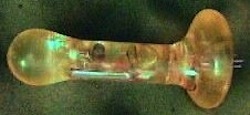 John D. Perry is an inventor, who wrote “A Pictorial History of Insertable EMG Sensors“,which is all about vaginal sensors (electromechanical sensors inserted into vaginas for monitoring, assessment, or other purposes), one of which is pictured here.
John D. Perry is an inventor, who wrote “A Pictorial History of Insertable EMG Sensors“,which is all about vaginal sensors (electromechanical sensors inserted into vaginas for monitoring, assessment, or other purposes), one of which is pictured here.

May 8, 2012
Manlove and the Manlove Condom Study
Manlove is an authority on condom use, as one sees in the study:
“Condom Use and Consistency Among Male Adolescents in the United States,” Jennifer Manlove, et al., Journal of Adolescent Health, Volume 43, Issue 4 , October 2008, pp. 325-333. The study reports:
“Findings highlight multiple domains of influence on condom use behaviors among male adolescents.”

Dodos – were they fat, or not?
A lively debate has recently taken flight within the pages of the prestigious natural sciences journal Naturwissenschaften. It all centres around the question of whether Raphus cucullatus, a.k.a. the (now extinct) Dodo might have been waddlingly plump or sprightly slim.
Here are some example papers from either side of the debate :
• The end of the fat dodo? A new mass estimate for Raphus cucullatus
• The dodo was not so slim: leg dimensions and scaling to body mass
• In defence of the slim dodo: a reply to Louchart and Mourer-Chauviré
Note: The illustration shows detail from Roelandt Savery’s (1576-1639) depiction of a Dodo, presumably more or less representative of the bird as it appeared to the artist at the time.

Sub-fever-pitch for next pitch drop’s imminent dropping
Low key, steady excitement comes through in this News.com report about the Australian project that was honored with the 2005 Ig Nobel Prize in physics:
Pitch drop experiment’s ninth drop is preparing to fall. Fingers crossed the live feed holds
Eighth drop fell in 2000
Camera failed at crucial moment
Ninth drop due within 12 monthsIS this the world’s most boring live stream?
Well, yes. But that could all change anywhere between the next five seconds and the next 12 months.
It’s been 12 years and four months since the last time this glass jar at the University of Queensland saw any action – exactly the same amount of time it took something to happen before that. But what exactly will happen? As a famous scientist once said, we’re glad you asked. That blob of tar pitch stretching down from the cocktail glass shaped thing will fall on the eight other blobs settled below it. Excited much? Trust us, it gets better.
I can’t wait. Take me to the live feed of the pitch drop experiment immediately …
The photo below, taken in 2007, shows Professor John Mainstone, co-winner of the Ig Nobel Prize, Professor Mainstone as he awaited the ninth drop.
(Thanks to investigators Deb Geisler and Geri Sullivan for bringing the news report to our attention.)

Headline of the day: “Having a wider face could save your life”
Today’s Headline of the Day arrived in a press release* from the publisher Elsevier: “Having a wider face could save your life.” It pertains to this study:
“Male facial width is associated with death by contact violence: narrow-faced males are more likely to die from contact violence,” Michael Stirrat [whose face is pictured here], Gert Stulp, Thomas V. Pollet, Evolution and Human Behavior, epub April 17, 2012. The authors, at, University of St. Andrews, UK, and at University of Groningen, explain:
“In these data, men with narrower faces were more likely to have died as a consequence of homicides involving direct physical contact than men with wider faces…. This finding suggests that wider-faced males are less likely to die from male–male physical violence.”
[The authors then make guesses to try to explain their claims.]
*BONUS: In the same tip sheet, the publisher Elsevier also lists, as its first item in the category “Science and Technology”, the headline: ”Lipstick and tipping behaviour: when red lipstick enhance waitresses tips”
BONUS: Some Men Have Heads Built for Success or for Evil

Marc Abrahams's Blog
- Marc Abrahams's profile
- 14 followers




